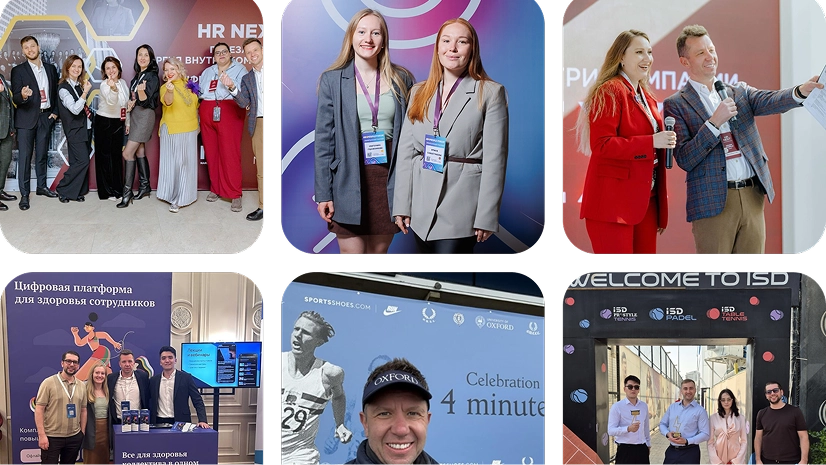Why Building a Strong Remote Work Culture is Crucial
As remote and hybrid work models become the norm, organisations must find ways to maintain a strong company culture. A strong culture can lead to better employee engagement, productivity, and retention. But, for many HR professionals, the challenge lies in translating the in-office culture to a virtual environment. In this article, we'll outline the best practices to build a strong remote workforce culture and ensure your employees feel connected, motivated, and aligned with your company’s mission—regardless of location.
Key Strategies to Build a Strong Remote Work Culture
Communicate Company Values Clearly and Consistently
One of the most critical elements of a strong remote work culture is clarity around your company’s mission, vision, and values. These should guide every interaction within the organisation. A clear company mission helps remote employees feel they are part of something bigger, even when working from home.
Actionable Tips:
- Frequently share and reinforce your values in team meetings and company communications.
- Include your values prominently in all onboarding materials for new remote employees.
- Use digital tools like Slack to keep your values visible to remote workers.
Promote Transparent and Frequent Communication
One of the top challenges of a remote workforce is the lack of organic, face-to-face interaction. To build a strong company culture remotely, open and transparent communication is essential. This ensures that every team member, whether in the office or working from home, feels included and informed.
Best Practices:
- Create virtual “watercooler” channels for informal team interactions.
- Schedule regular video meetings to maintain a personal connection.
- Encourage open feedback and two-way communication between employees and leadership.
Encourage Team Collaboration and Engagement
Without intentional effort, remote workers can feel disconnected from their teams. Employee engagement in remote teams requires structured collaboration and bonding opportunities. Virtual team-building activities help foster teamwork and collaboration, both of which are critical to a strong company culture.
How to Encourage Collaboration:
- Use project management and collaboration tools like Asana or Google Workspace.
- Plan virtual team-building games and social activities.
- Implement employee engagement platforms like Stayf to create fun, interactive challenges that promote wellbeing and connection among remote teams.

Recognize and Reward Employee Achievements
Recognition is a key pillar of any successful workplace culture. When employees feel appreciated for their contributions, they are more likely to be engaged and motivated. Recognizing remote employees can be as simple as a public shoutout during virtual meetings or using reward systems integrated into an engagement platform.
Tips for Remote Recognition:
- Celebrate team successes and individual achievements through virtual ceremonies or newsletters.
- Use digital platforms to track participation in company challenges and reward points or badges.
- Encourage peer-to-peer recognition to build camaraderie.
Encourage Work-Life Balance for Remote Employees
A healthy work-life balance is a significant component of remote work culture. Remote workers often face challenges like overwork and burnout, which can undermine productivity and morale. Promoting flexibility and respecting boundaries is crucial to creating a positive remote workplace.
Work-Life Balance Strategies:
- Offer flexible hours to accommodate different time zones and personal schedules.
- Create and share mental health resources or wellness programs.
- Use digital wellbeing platforms like Stayf to promote mental health, with team-based challenges and educational content that support overall wellbeing.
Provide Continuous Learning and Growth Opportunities
Opportunities for professional development are key drivers of employee satisfaction. Remote employees should feel empowered to grow within the company, even when working away from the physical office. Offering virtual learning tools and opportunities can help employees enhance their skills and stay engaged with the company’s long-term goals.
How to Promote Learning in a Remote Environment:
- Host virtual workshops and webinars that are relevant to your industry or employee interests.
- Use an educational content library integrated into your employee engagement platform.
- Encourage mentorship programs to facilitate knowledge sharing across teams.
Leverage Technology to Create Virtual Communities
Technology is the cornerstone of a strong remote culture. By leveraging the right collaboration tools and engagement platforms, you can create an environment where employees feel connected, even from afar. Choose tools that foster interaction, teamwork, and communication.
Essential Tools for Remote Culture:
- Video conferencing platforms like Zoom or Microsoft Teams for face-to-face meetings.
- Employee engagement tools like Stayf to create team-based challenges, gamified experiences, and virtual communities.
- Use instant messaging tools like Slack to keep communication lines open and casual.
Measuring and Maintaining Your Remote Work Culture
A thriving remote workforce culture isn’t a “set it and forget it” strategy. You need to continuously assess and adapt your culture to ensure it meets the needs of your remote team. Regularly evaluating employee satisfaction, engagement levels, and productivity will give you the insight you need to make adjustments.
How to Measure Remote Culture:
- Use employee engagement surveys to gather feedback on workplace culture.
- Monitor participation rates in team-building activities and remote challenges.
- Analyse key performance indicators (KPIs) like employee retention and productivity.
The Path to Building a Strong Remote Workforce Culture
A strong remote culture doesn’t happen by accident. It requires intentional effort, the right tools, and a commitment to building connections, regardless of geographic location. By clearly defining your company values, promoting open communication, and fostering engagement through collaboration and recognition, you can create a remote work culture that thrives. With the help of technology and remote engagement platforms like Stayf, you can boost employee satisfaction, engagement, and retention across your distributed team.
What is the level of wellbeing in your team?
 Take the survey
Take the surveyWellbeing course for HR specialists
.png) Subscribe
Subscribe.png)
.png)
.png)





.png)





